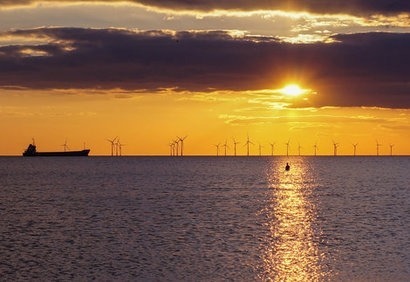
The approval of the project allows for two separate 1.2 GW projects, each incorporating 200 wind turbines installed across an area of around 600 square kilometres and located 165 kilometres from shore. This takes the total of consented projects in the North Sea to 4.8 GW, almost equivalent to all the offshore wind capacity currently in operation in UK waters. Dogger Bank A and B is part of the Dogger Bank Zone and is the largest of the Round 3 zones. It is also the farthest from shore while also being one of the shallowest UK offshore wind sites. The locations benefit from high wind speeds as well as ideal seabed conditions.
The project is the Forewind Consortium’s second approval following Dogger Bank Creyke Beck in February. Both developments have a proposed installed capacity of 2.4 GW, making them the largest renewable energy applications ever to be approved in the UK and also the largest planned offshore wind scheme in the world.
“Thanks to Government support the UK is the world leader in offshore wind energy” said Energy and Climate Change Minister Lord Bourne. “As we build the Northern Powerhouse, we want local communities to reap the benefits of investment and green jobs from low carbon developments like Dogger Bank Offshore wind project.”
Forewind General Manager, Tarald Gjerde, added that the project represents a real opportunity for the UK to receive even more of its energy from its abundant wind resource while creating significant economic benefits, particularly for the north eastern regions.
Four years comprehensive assessments have gone into the project accompanied by community and stakeholder consultation, and planning by the Forewind consortium which is owned equally by the four international energy companies – RWE, SSE, Statkraft and Statoil. Preparation work also included the most extensive study of an offshore area ever undertaken by a wind energy developer, with more than £60 million spent on surveys, the vast majority of this work going to UK-based contractors.
The power generated by the facility will be brought to shore between Redcar and Marske-by-the–Sea, in Teesside via a nine kilometre onshore cable connecting into the national grid at the existing Lackenby Substation adjacent to the Wilton International industrial complex. When complete, the wind farm will be one of the UK’s largest power generation plants, equal to Dogger Bank Creyke Beck and second only to the 3.9 GW Drax coal-fired station in North Yorkshire. It will be capable of generating 8 TWh of clean energy per year, more than enough to power all the commercial and industrial consumers in the North East every year and equal to the amount used annually by approximately two million British homes.
The project also paves the way for the phased delivery of wind projects across the Dogger Bank. It will create up to 4750 new direct and indirect full time jobs and generate more than £1.5 billion for the UK economy with the majority of opportunities being available in the North East, Yorkshire and the Humber regions.
The proximity of these areas to the development, alongside their maritime and industrial heritage, puts them in a prime position to take advantage of the many supply chain and employment opportunities, as well as existing skills in large-scale production activities and a history of support for offshore projects.
For additional information:

